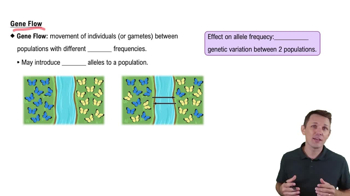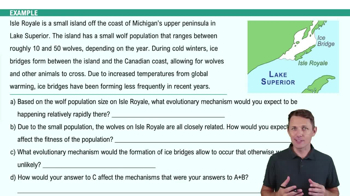Table of contents
- 1. Introduction to Biology
- 2. Chemistry
- 3. Water
- 4. Biomolecules
- 5. Cell Components
- 6. The Membrane
- 7. Energy and Metabolism
- 8. Respiration
- 9. Photosynthesis
- 10. Cell Signaling
- 11. Cell Division
- 12. Meiosis
- 13. Mendelian Genetics
- Introduction to Mendel's Experiments
- Genotype vs. Phenotype
- Punnett Squares
- Mendel's Experiments
- Mendel's Laws
- Monohybrid Crosses
- Test Crosses
- Dihybrid Crosses
- Punnett Square Probability
- Incomplete Dominance vs. Codominance
- Epistasis
- Non-Mendelian Genetics
- Pedigrees
- Autosomal Inheritance
- Sex-Linked Inheritance
- X-Inactivation
- 14. DNA Synthesis
- 15. Gene Expression
- 16. Regulation of Expression
- Introduction to Regulation of Gene Expression
- Prokaryotic Gene Regulation via Operons
- The Lac Operon
- Glucose's Impact on Lac Operon
- The Trp Operon
- Review of the Lac Operon & Trp Operon
- Introduction to Eukaryotic Gene Regulation
- Eukaryotic Chromatin Modifications
- Eukaryotic Transcriptional Control
- Eukaryotic Post-Transcriptional Regulation
- Eukaryotic Post-Translational Regulation
- 17. Viruses
- 18. Biotechnology
- 19. Genomics
- 20. Development
- 21. Evolution
- 22. Evolution of Populations
- 23. Speciation
- 24. History of Life on Earth
- 25. Phylogeny
- 26. Prokaryotes
- 27. Protists
- 28. Plants
- 29. Fungi
- 30. Overview of Animals
- 31. Invertebrates
- 32. Vertebrates
- 33. Plant Anatomy
- 34. Vascular Plant Transport
- 35. Soil
- 36. Plant Reproduction
- 37. Plant Sensation and Response
- 38. Animal Form and Function
- 39. Digestive System
- 40. Circulatory System
- 41. Immune System
- 42. Osmoregulation and Excretion
- 43. Endocrine System
- 44. Animal Reproduction
- 45. Nervous System
- 46. Sensory Systems
- 47. Muscle Systems
- 48. Ecology
- 49. Animal Behavior
- 50. Population Ecology
- 51. Community Ecology
- 52. Ecosystems
- 53. Conservation Biology
22. Evolution of Populations
Gene Flow
22. Evolution of Populations
Gene Flow
Practice this topic
- Multiple Choice
To boost wild populations of fish such as Atlantic Salmon, scientists will sometimes breed fish in captivity and then release the fish into the wild population. Below, scientists measured the fitness of the wild fish, the captive-bred fish after being released into the wild population, and the first-generation offspring of wild and captive-bred fish. The fitness values are reported as relative values between 0 and 1. What description below best explains the data?
250views - Multiple ChoiceWhich of the following is an example of gene flow?
- Multiple ChoiceWhat is the significance of gene flow in a population?1views
- Multiple ChoiceWhat is the effect of gene flow on the fitness of a population?


